Eileen's Scuba Site Plan Your Life and Live Your Dive Plan |
Northeast - NYC ![]() Tropical - Warm Water
Tropical - Warm Water
![]() Equipment,
Links, Info
Equipment,
Links, Info ![]() Home Page
Home Page
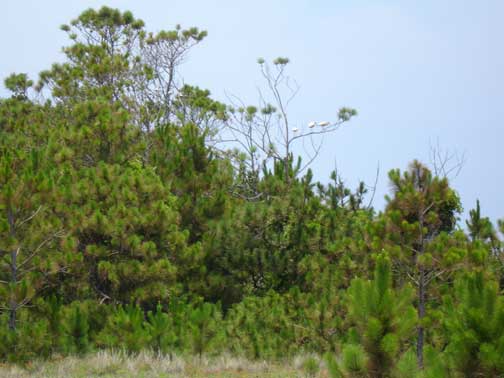 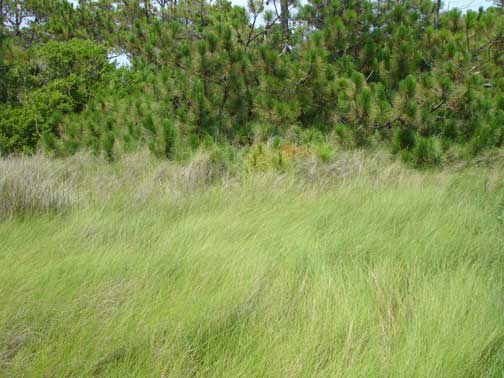 The
grass and brush are home to many living things including these birds. The
grass and brush are home to many living things including these birds.
|
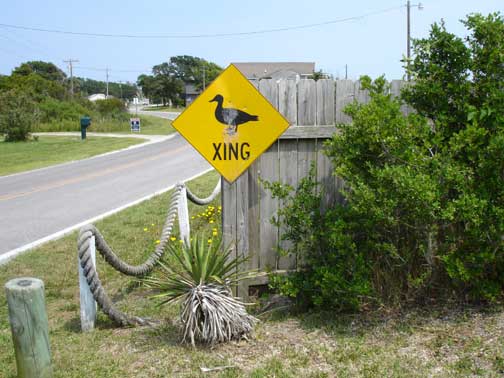 Back
on Harkers Island we found this duck crossing sign. A family of
ducks crossed the road in front of my car. Back
on Harkers Island we found this duck crossing sign. A family of
ducks crossed the road in front of my car.
|
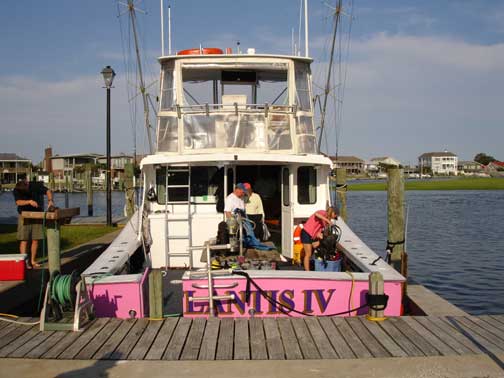 On Monday we awoke at 5:30am, boarded the Atlantis IV, and with calm seas forecast, we headed offshore
for our first dive. On Monday we awoke at 5:30am, boarded the Atlantis IV, and with calm seas forecast, we headed offshore
for our first dive.
|
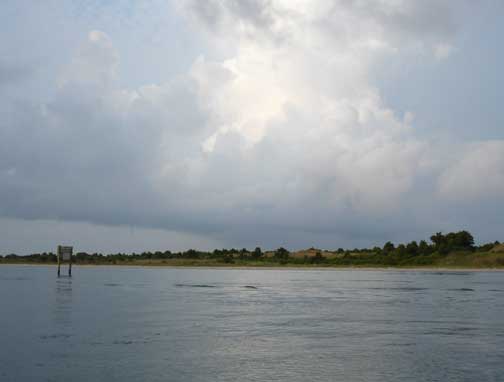 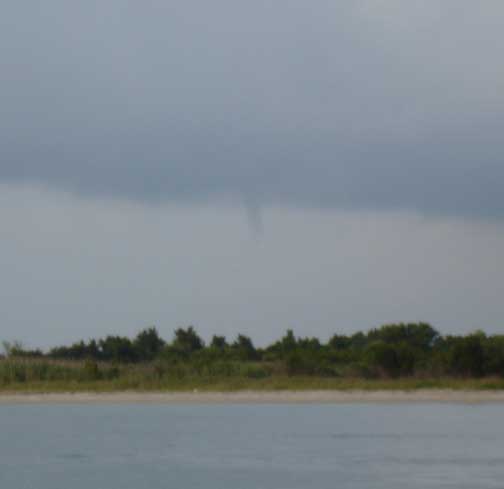 As
we headed out, we saw a water spout. As
we headed out, we saw a water spout.
|
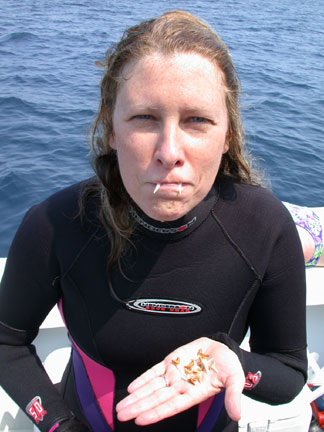 Our
first dive was on the wreck of the Proteus, a passenger freighter that sank in 1918 after a
collision with another ship during a WWI blackout - the ships were
running without navigational lights. We easily recognized the boilers
and a great number of sand tiger sharks that inhabited the wreck on
this day. A large stingray was seen swimming around along the
bottom. Lots of barracuda kept us company on the hang line near
the surface. Our
first dive was on the wreck of the Proteus, a passenger freighter that sank in 1918 after a
collision with another ship during a WWI blackout - the ships were
running without navigational lights. We easily recognized the boilers
and a great number of sand tiger sharks that inhabited the wreck on
this day. A large stingray was seen swimming around along the
bottom. Lots of barracuda kept us company on the hang line near
the surface.
During the surface interval we saw a portguese man-o-war floating on the surface of the ocean. The second dive was on the wreck of the Caribsea, a freighter that was torpedoed by the U-158 in 1942. This wreck won the all-time award for the number of sand tiger sharks swimming around. Harry joked that it was a personal injury lawyers convention. One of them was just over my head as it was time for me to make my ascent up the anchor line. Perfect timing for me, the line jerked and scared the shark away. I found a shark tooth in the sand. We saw an angler fish sitting on the wreck. |
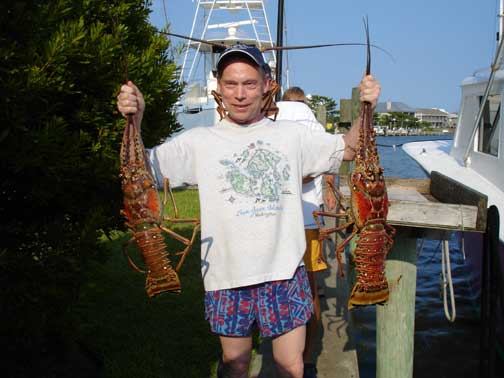 On Tuesday, we dived the wreck of the
Cassimir, a tanker that sank after a collision with another ship in
1942. This wreck was beautiful and full of sea life. We
saw a large school of spade fish, more large barracuda, a huge
stingray, and two small moray eels. The wreck is split in
half. I looked for the safe in the wheelhouse but did not see
it. On Tuesday, we dived the wreck of the
Cassimir, a tanker that sank after a collision with another ship in
1942. This wreck was beautiful and full of sea life. We
saw a large school of spade fish, more large barracuda, a huge
stingray, and two small moray eels. The wreck is split in
half. I looked for the safe in the wheelhouse but did not see
it.
During the surface interval we saw dolphins swimming. The next dive was not to a wreck but to an area know as "The Ledges", crevices cut into the ocean bottom. Tucked away in the ledges were some very large lobster. Some divers retrieved their dinner but John had to throw his back in the water because when he reached the surface he discovered that he had taken a female with eggs. |
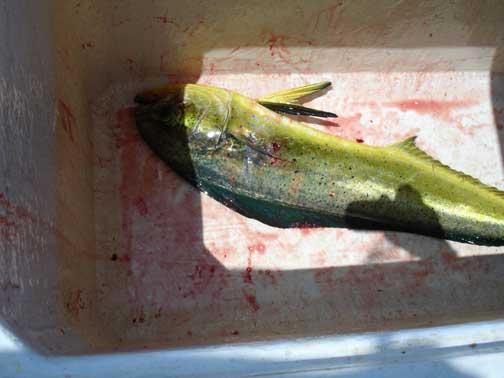 During
the surface interval, lines were set out to troll for fish. One
line picked up a maui maui, also known as dolphinfish. I reeled
him in. During
the surface interval, lines were set out to troll for fish. One
line picked up a maui maui, also known as dolphinfish. I reeled
him in.
|
|
The next day we visited the Far East
Tanker; its official name is the Tamaulipas. This tanker sank in 1942
after it was hit by a torpedo from the U-552. This was a deep dive
for which we needed to lower our nitrox blend. There were many
sand tiger sharks and various fish swimming around the wreck.
During the surface interval, spotted dolphins visited us. I jumped back in the water wearing my mask and had a nice visit with them. One swam up to me briefly , looked at me and swam on. The wreck of the Ashkhabab was sunk in 1942 by a torpedo from the submarine U-402. It carried fuel oil On the wreck we saw a large school of amberjack chasing shiny silver bait fish that flashed from the sunlight. Sand in the background glistened. The bait fish moved in a wave across the wreck as the amberjack dove into the school looking for a tasty morsel. A special third dive brought us to the coal fired steamer where we did a quick dive and found another school of amberjack. On Thursday we visited the popular shipwreck known as the Papoose, a tanker sunk in 1942 by a torpedo from the U-124. We encountered more great visibility and large sand tiger sharks sleeping under the wreck. Our second dive was at the same location. |
Go
to North Carolina 2007 Part 3
| NORTHEAST - NYC | TROPICAL - WARM WATER | EQUIPMENT, LINKS, INFO | HOME PAGE |
|
Eileen's Scuba Site New York City | eileen9@iname.com Plan Your Life and Live Your Dive Plan |